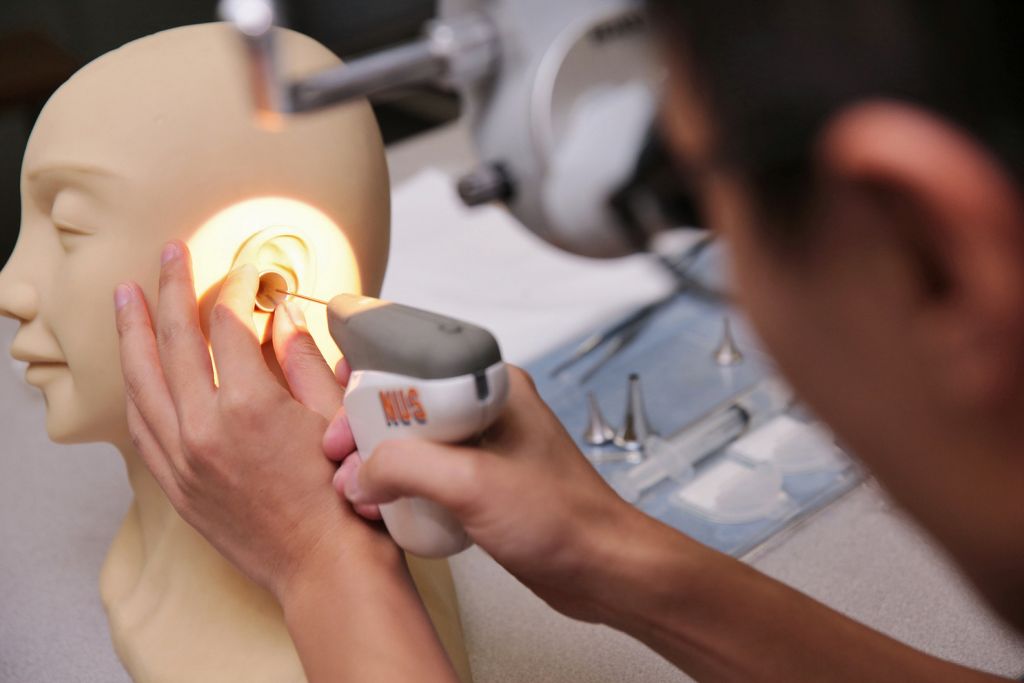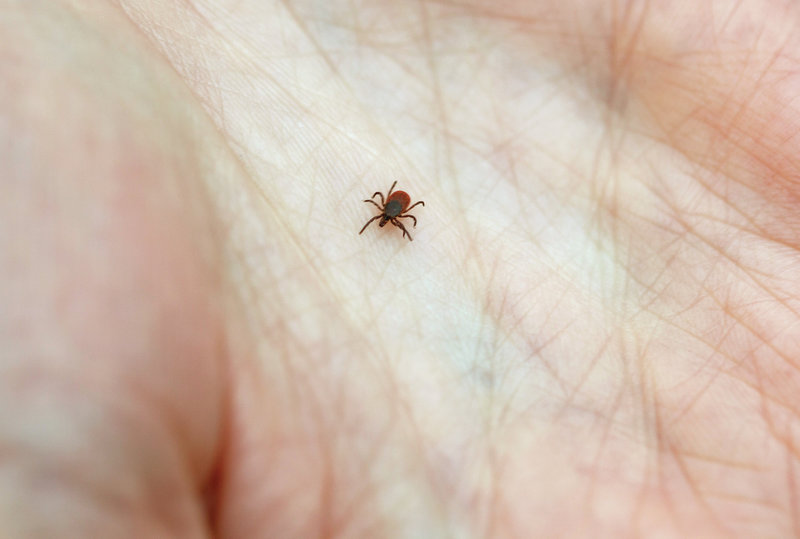‘Unglue’ Those Ears to Prevent Hearing Loss

This handheld device, CLiKX, was developed by NUS for treating sufferers of glue ear. The gadget may eliminate the need for general anaesthesia and speed up recovery time. PHOTO: National University of Singapore
Glue ear’ is said to affect about 84,000 children in Singapore every year
SINGAPORE — Although her youngest child Daliah did not respond to soft sounds and exhibited some speech delays, Mrs Paushali Lass was not overly concerned at first as her older children had also started talking late. But a routine check-up revealed that the 10-month-old, who was born with a cleft palate, had otitis media with effusion (OME), a condition more commonly known as “glue ear”.
The ailment, in which the infant’s middle ear was blocked due to a build-up of sticky fluid, is estimated to affect some 84,000 children here every year.
It may occur when the child contracts an upper respiratory tract infection such as a cold, when fluid or mucus accumulates in the middle ear. Children who are born with a cleft lip or palate, or other craniofacial abnormalities, are also more vulnerable to glue ear.
More worryingly, glue ear is the leading cause of hearing loss and doctor visits among children worldwide, said Dr Lynne Lim, an adjunct associate professor with the Department of Otolaryngology at the National University of Singapore (NUS) Yong Loo Lin School of Medicine.
Symptoms to watch out for include communication and speech problems, but the signs are not always so straightforward.
Older children may complain of hearing issues, while younger ones may tug at their ear, said Dr Lim. The child may also experience speech delays or appear to be inattentive.
When a child gets OME, hearing loss may occur as the fluid dampens the movement of the eardrum and the bones of the middle ear.
This reduces the ear’s ability to conduct sound from the outer ear canal to the inner ear, explained Dr Goh Xueying from the Department of Otolaryngology (ENT) — Head and Neck Surgery at National University Hospital (NUH), which sees about 200 to 300 such cases each year.
This can lead to speech problems in children, especially when it occurs in the critical first few years of life when they are picking up speech and language. Even mild hearing loss during this period can lead to long-term speech problems and affect their school performance as well as balance and gross motor skills, he said.
A bout of glue ear may last three months each time, and it is not unusual for children to get up to four episodes every year, said Dr Lim, who is also a senior Ear, Nose and Throat (ENT) consultant at Mount Elizabeth Medical Centre.
Children particularly at risk of recurrent ear infections are those who attend daycare or are exposed to second-hand smoke, or who have allergies, reflux, or predisposing syndromes like a cleft lip or palate and other craniofacial abnormalities, said Dr Goh.
Dr Lim said: “When left untreated, recurring ear infections would mean the child may not be hearing well that entire year, which has been shown to affect the development of the hearing brain.
“Even when the fluid is drained, the child may continue to have auditory hearing issues in which they hear sound but the brain does not process the information, making him appear inattentive,” Dr Goh urged parents who suspect their child of having OME or hearing loss to refer them to an ENT surgeon.
GETTING SURGERY
The first line of treatment is usually the use of medication such as antibiotics, but these may not always be effective, according to Dr Lim.
While the majority of cases eventually resolve by themselves, about 10 to 15 per cent would require surgery, said Dr Goh.
Surgery is currently the gold standard of care for patients with three or more episodes of OME each year, particularly those who experience hearing loss and speech difficulties, have craniofacial predisposition to the condition, or are concerned about building resistance to the long-term use of antibiotics, said Dr Lim.
But the procedure, which involves inserting a small tube (known as a grommet) into the eardrum to drain the fluid in the middle ear under general anaesthesia, does not always sit well with parents concerned about the potential long-term neurological effects of general anaesthesia on brain development in young children.
For instance, in a 2009 study conducted by Mayo Clinic, researchers found that children who had undergone anaesthesia more than once before the age of four were more likely to later be diagnosed with a learning disability than kids who had never undergone anaesthesia.
Knowing full well the importance of treating her daughter’s recurring ear condition, Mrs Lass sent Daliah for the procedure to unblock her glue ear twice — when she was 10 months old, and a second time last month when it recurred in the two-and-a-half-year-old.
The homemaker said: “It was quite scary and strange for me to see my daughter suddenly just drop off to oblivion when the general anaesthesia kicked in. When there’s general anaesthesia involved, any parent would be concerned.”
BREAKTHROUGH DEVICE
A new palm-sized device called CLiKX, developed by NUS researchers together with Dr Lim, may soon change the way surgery for glue ear is carried out.
Presently, the surgery is carried out in an operating theatre and lasts about 30 minutes. Patients may be monitored for about three to six hours post-operation, said Dr Lim.
But using a lightweight 185g handheld device, doctors can deliver the grommet tube into the patient’s ear swiftly and safely — within a second, in a single step — using a sensor-controlled automated process, said Associate Professor Tan Kok Kiong from the Department of Electrical and Computer Engineering at the NUS Faculty of Engineering, who led the team involved in the project.
CLiKX could allow surgeons to administer the procedure using light or moderate sedation or local anaesthetic, significantly reducing the pre-operation preparation and the post-operation recovery time.
The project was kickstarted in 2011 after Dr Lim returned home from a humanitarian mission in underdeveloped areas in Cambodia and Vietnam. There, she attended to children suffering from hearing loss due to glue ear, but could not treat them without access to general anaesthesia.
“At the moment, at least six to seven staff are deployed in the operating theatre (for a grommet tube placement surgery).
‘‘Personally, I felt that the entire set-up of an operating theatre is overkill for a small procedure. With the simplified procedure using CLiKX, it is possible to bring this procedure out of the operating theatre and into the doctor’s consultation room, thereby saving on healthcare costs,” said Dr Lim.
The first-in-human trial for CLiKX is expected to take place next year, and the NUS team aims to commercialise the device by 2020.
Source: TodayOnline
“‘Unglue’ those ears to prevent hearing loss, speech delays” by:EVELINE GAN


